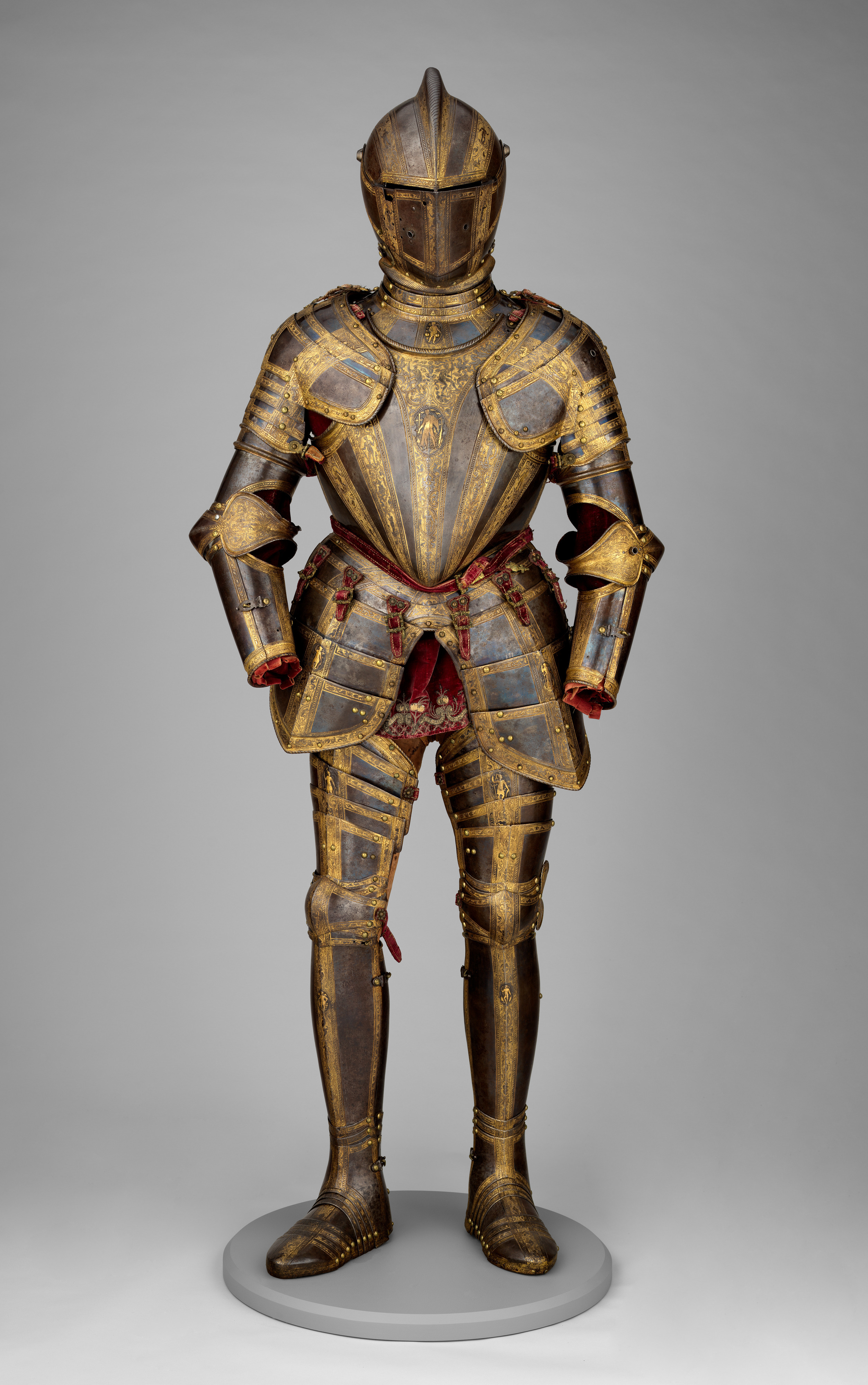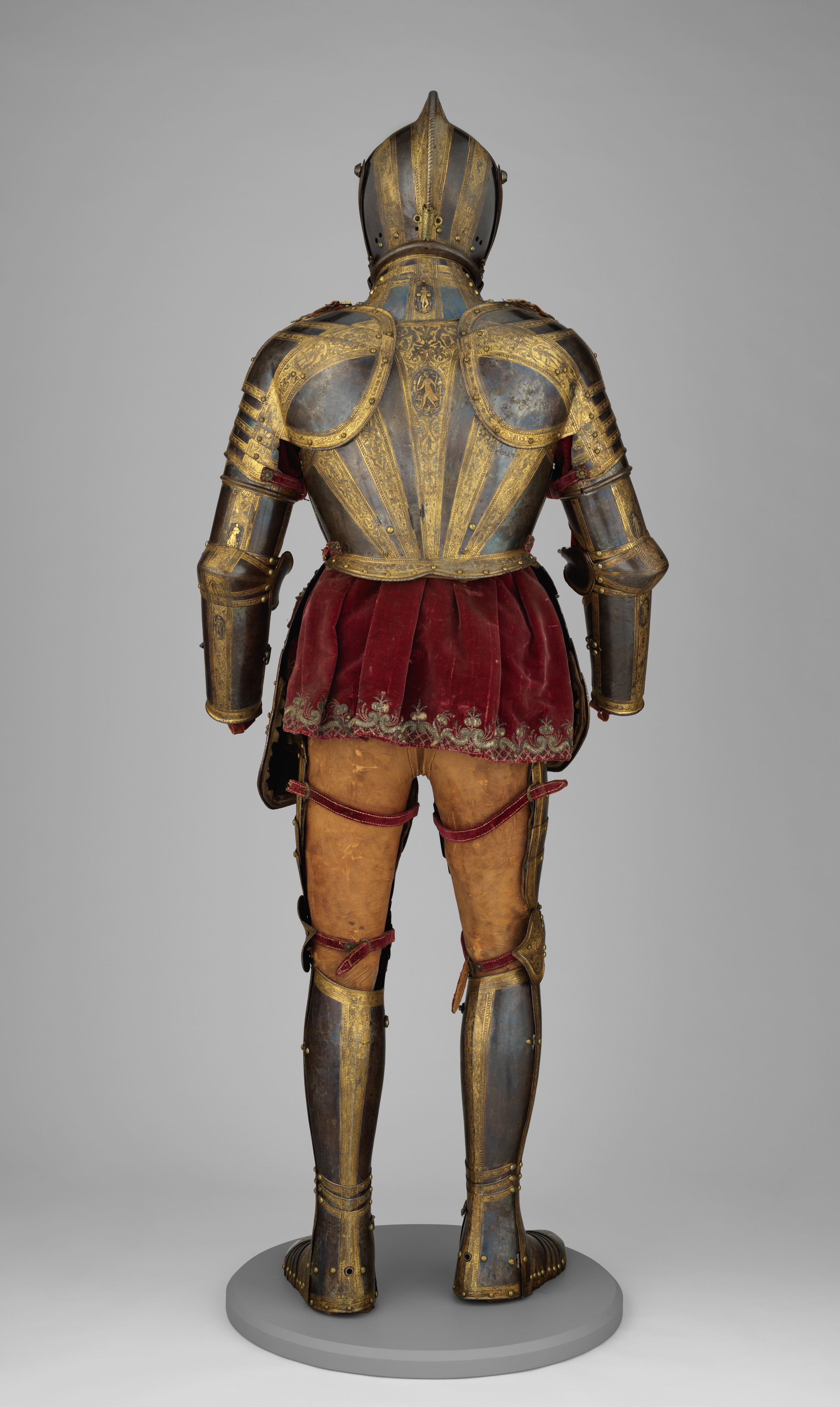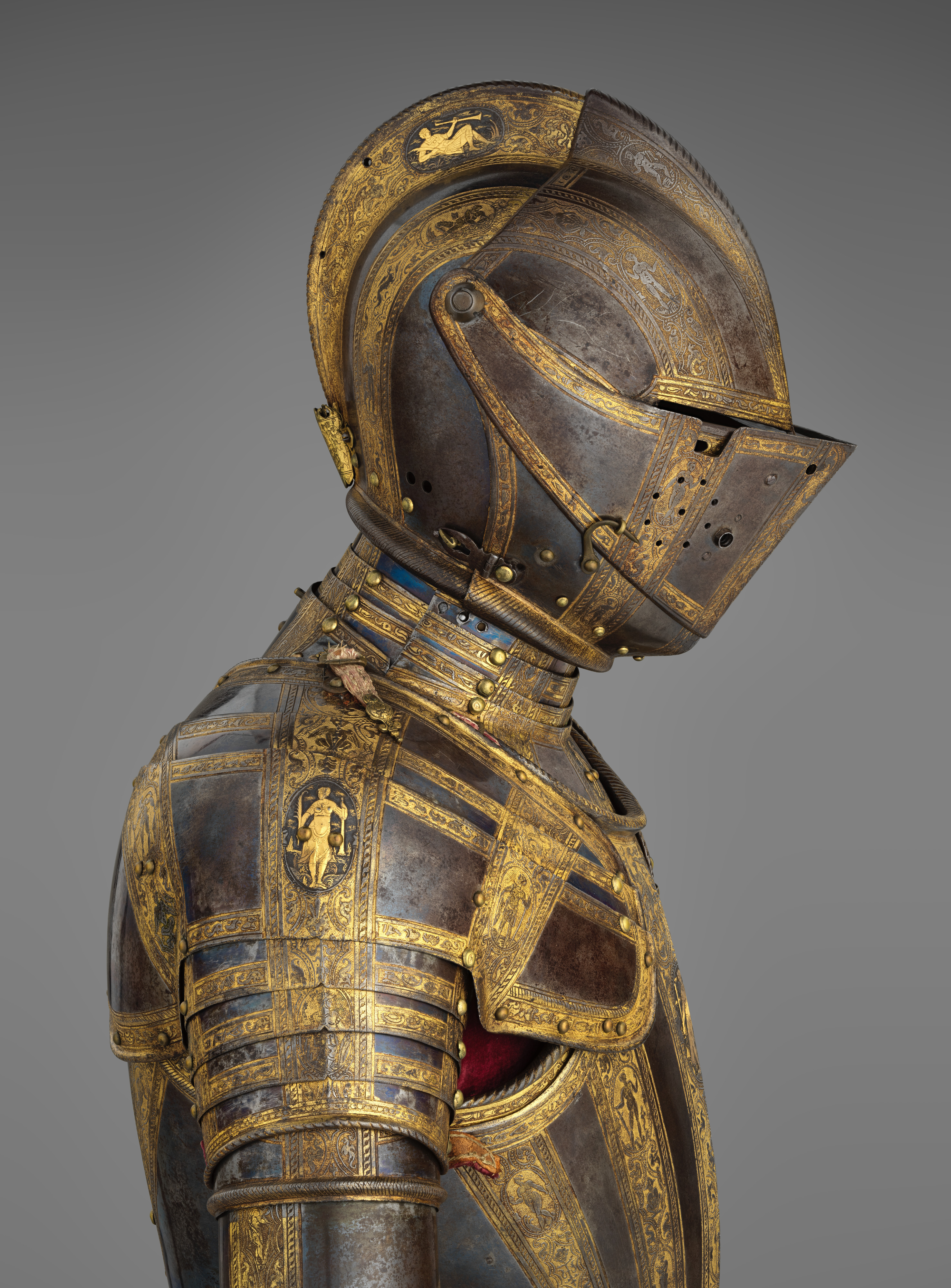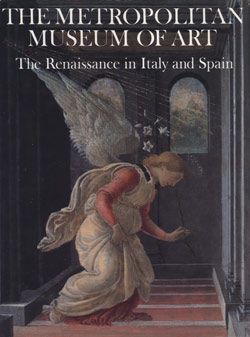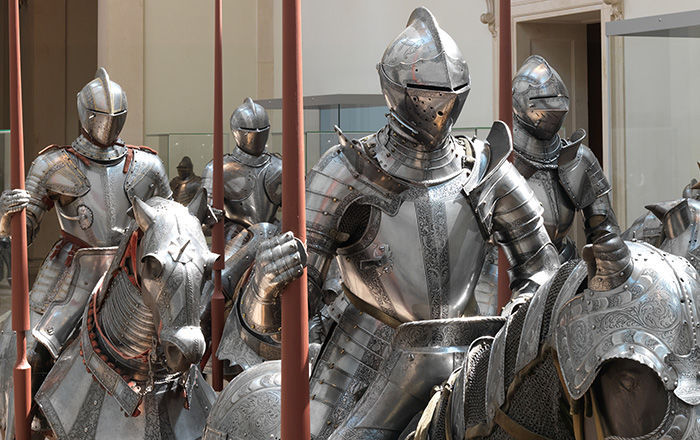Armor for Field and Tournament
This richly decorated armor is a mix of components from a large garniture for battle and tournament use. The close helmet and arm defenses are for the tilt, a joust in which a barrier separated two mounted contestants. The asymmetrical tassets (upper thigh defenses) are for the tourney, a mock combat fought by two groups of mounted contestants armed with blunted lances and swords. The breastplate, with no lance rest, and the backplate are for the tournament fought on foot or for infantry use. The shoulder defenses and the leg armor could be worn both in battle and in the tournament.
The armor’s blued steel surfaces are etched and gilt with bands of ornament, some in low relief, that includes strapwork, grotesques, allegorical figures, and gods. The winged figure at the top of the breastplate, holding a trumpet and palm branch, symbolizes Fame.
Garnitures of this complexity were among the most extensive developed by Italian armorers and remained in vogue from about 1575 to 1600. Their enormous expense and elaborate decoration made them affordable to only a limited group of noble patrons. This armor appears to have been ordered by the duke of Saxe-Weimar, and it remained in a German castle until the 1920s.
This image cannot be enlarged, viewed at full screen, or downloaded.
This artwork is meant to be viewed from right to left. Scroll left to view more.


